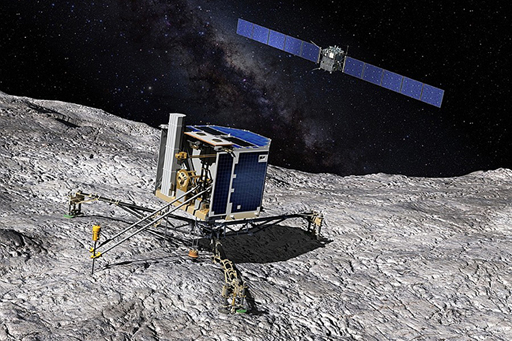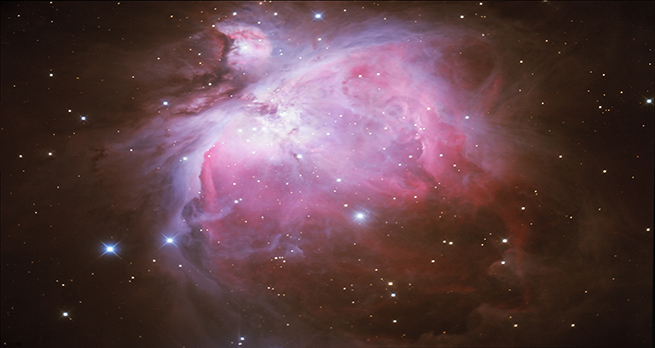4.2.7 Philae lander

A team from The Open University was involved in building instruments for the Philae lander and were very excited when it landed in November 2014.
Unfortunately, however, Philae didn’t land smoothly, and came to rest below an overhanging cliff, preventing sunlight from reaching its solar panels. Nevertheless, the instruments on board managed to achieve many of their goals and collected a huge quantity of data before the main battery died. In the first few months of 2015, the mission engineers had hoped that the strengthening sunlight as the comet moved closer to the Sun would provide enough power to the solar panels to recharge the batteries and wake Philae up.
In June 2015, a brief contact was re-established with Philae, but since July 2015, no new communications have been possible. Mission controllers are still trying to communicate with the lander, but even if that proves not to be possible, the mission was still a great success so watch out for plenty of science results being announced over the coming months and years.
If you want to find out more about the OU’s involvement with the Rosetta mission, then check out Rosetta in the UK [Tip: hold Ctrl and click a link to open it in a new tab. (Hide tip)] .
Activity _unit4.3.1 Activity 4.2
Exactly how hard do you think it is to land on a comet? Play the BBC’s Rosetta mission: Can you land on a comet? game.
If you want to find out more about the OU’s involvement with the Rosetta mission, then check out Rosetta in the UK.
